The Basics Of Baybayin By Mr Reimon Cosare
After the lectures done by three of the invited speakers , we had a quick lunch to prepare ourselves for the next activity, the highlight of the “Sulyap Sa Quiapo” series, the Baybayin workshop led by Mr Reimon Cosare.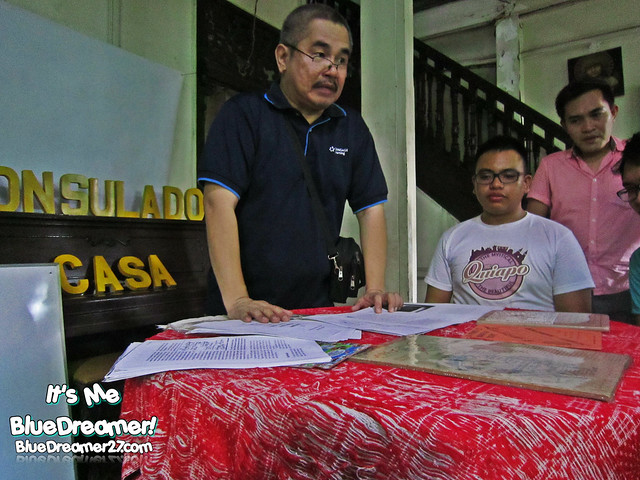 Mr Cosare has engaged Baybayin Calligraphy for more than a decade already and he also published books related to this subject including the “Ama, Ina, Anak”(Father, Mother, Child) and “Pinuno”. Both books are merely about his theories regarding with the origin of symbols used in baybayin and their connection to each other.
Mr Cosare has engaged Baybayin Calligraphy for more than a decade already and he also published books related to this subject including the “Ama, Ina, Anak”(Father, Mother, Child) and “Pinuno”. Both books are merely about his theories regarding with the origin of symbols used in baybayin and their connection to each other.
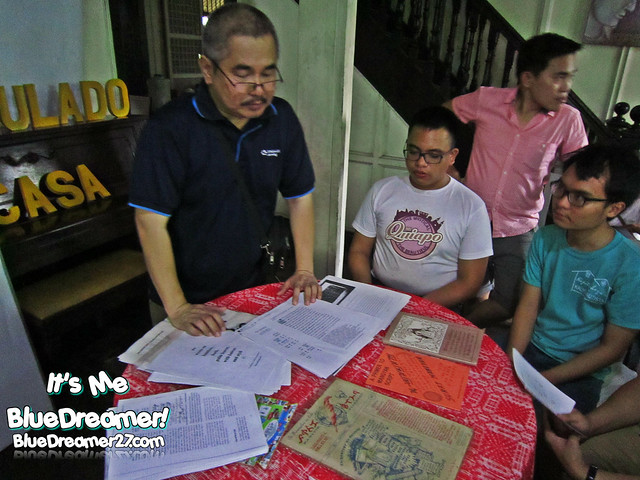 Prior to the actual workshop, Mr Cosare gave us a brief history about Baybayin. Baybayin is actually a Tagalog native alphabet, an ancient Philippine script that derived from Brahmic scripts of India and first recorded in the 16th century. When I was in highschool, this is formerly known as the “Alibata” until the “Baybayin Bill came in 2011 that declares Baybayin (wrongfully known as Alibata) as the national script of the Philippines. This bill actually mandates schools to teach Baybayin but it is sad that it is not generally implemented yet. Alibata by the way came from a coined term inspired from the first three letters of the Arabic alphabet “Alif”, “bā” and “tā”.
Prior to the actual workshop, Mr Cosare gave us a brief history about Baybayin. Baybayin is actually a Tagalog native alphabet, an ancient Philippine script that derived from Brahmic scripts of India and first recorded in the 16th century. When I was in highschool, this is formerly known as the “Alibata” until the “Baybayin Bill came in 2011 that declares Baybayin (wrongfully known as Alibata) as the national script of the Philippines. This bill actually mandates schools to teach Baybayin but it is sad that it is not generally implemented yet. Alibata by the way came from a coined term inspired from the first three letters of the Arabic alphabet “Alif”, “bā” and “tā”.
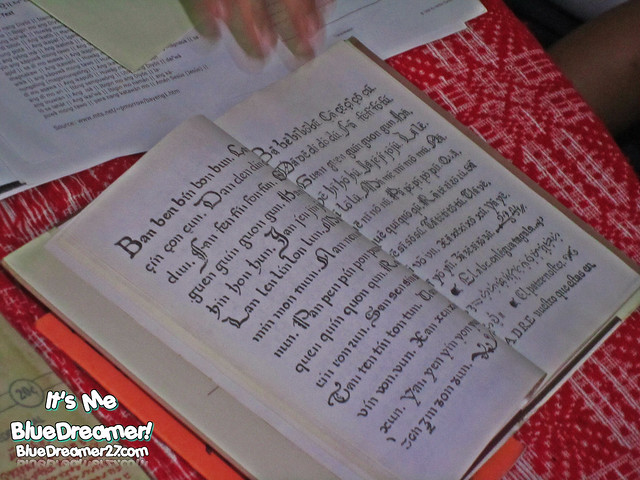 Mr Cosare showed off some books and samples where the Baybayin is being used. One of them is a the replicated copy of the Doctrina Christiana, one of the first books being published in the country. It was first published in 1593.
Mr Cosare showed off some books and samples where the Baybayin is being used. One of them is a the replicated copy of the Doctrina Christiana, one of the first books being published in the country. It was first published in 1593.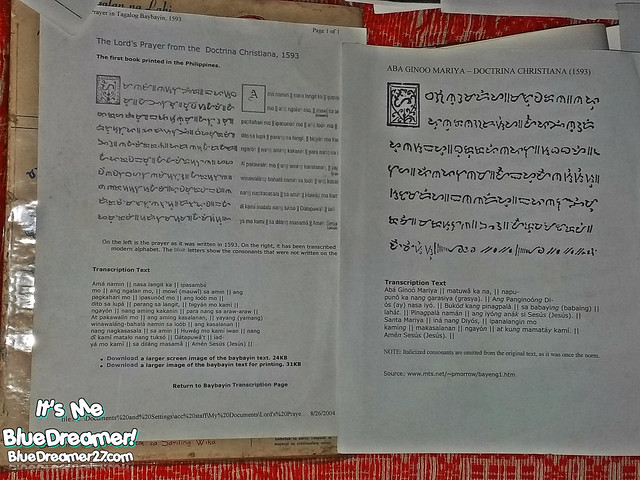 Most of the content of Doctrina Christiana are Catholic prayers that we are all familiar with. Each prayer is written sequentially in Spanish, Tagalog and then Baybayin. The two copies above shows “Ama Namin” (Our Father) and “Aba Ginoo Maria” (Hail Mary) both in Baybayin. If you are going to read it though, you will noticed that there are missing letters to pronounce a word correctly and this is beacuase early Baybayin has no standalone consonants yet it seems like Filipino naturally understand them much like how we can easily interpret those shortened text messages today.
Most of the content of Doctrina Christiana are Catholic prayers that we are all familiar with. Each prayer is written sequentially in Spanish, Tagalog and then Baybayin. The two copies above shows “Ama Namin” (Our Father) and “Aba Ginoo Maria” (Hail Mary) both in Baybayin. If you are going to read it though, you will noticed that there are missing letters to pronounce a word correctly and this is beacuase early Baybayin has no standalone consonants yet it seems like Filipino naturally understand them much like how we can easily interpret those shortened text messages today.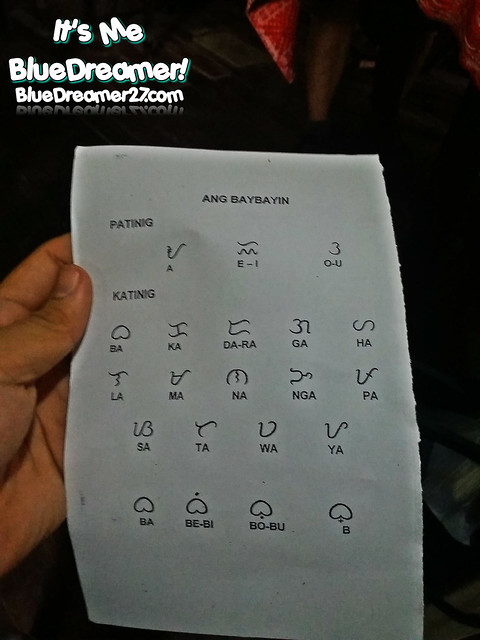 Here’s a quick guide to baybayin. Unlike the modern Filipino alphabet that is composed of 28 letters (including ñ and ng), Baybayin is only composed of 17 letters or symbols where 3 are Patinig(vowels) and 14 Katinig (consonants). The Kudlit is used to identify how each symbol is pronounced. The cross, on the other hand is used to eliminate vowel sounds and make it as a standalone consonant.
Here’s a quick guide to baybayin. Unlike the modern Filipino alphabet that is composed of 28 letters (including ñ and ng), Baybayin is only composed of 17 letters or symbols where 3 are Patinig(vowels) and 14 Katinig (consonants). The Kudlit is used to identify how each symbol is pronounced. The cross, on the other hand is used to eliminate vowel sounds and make it as a standalone consonant. 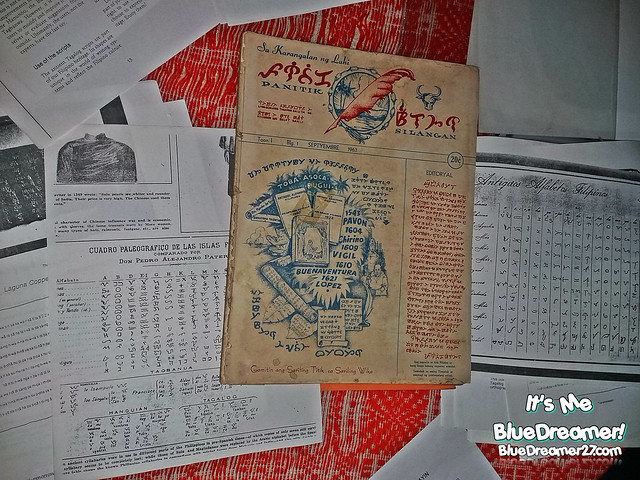 Another interesting item that he showed to us is this old Journal magazine “Panitik Silangan” which is all written both in Baybayin and Tagalog.
Another interesting item that he showed to us is this old Journal magazine “Panitik Silangan” which is all written both in Baybayin and Tagalog. 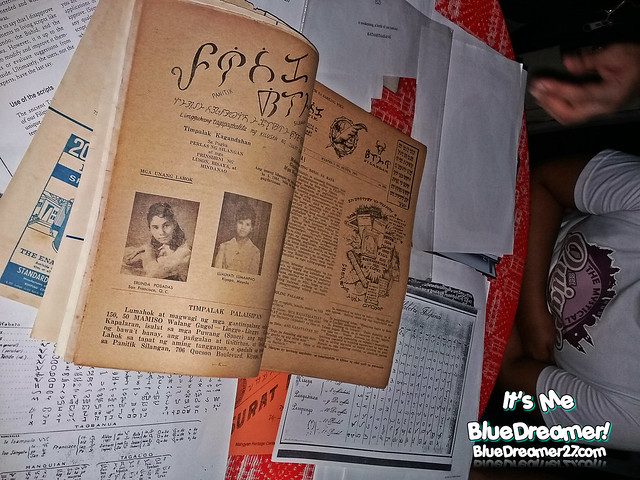 Here’s one of its interesting contents
Here’s one of its interesting contents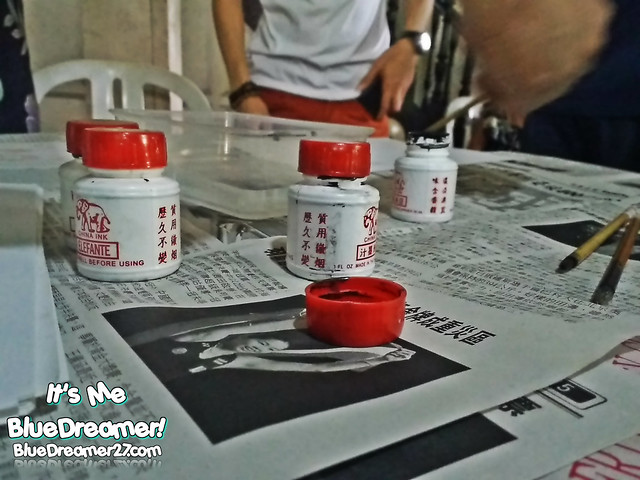 And now, for the most exciting part of the event, the Baybayin workshop. They provided us brushes and inks and a bunch of papers to practice Baybayin. It was really fun and definitely a great experience. It feels like learning a calligraphy but with Patrionism involved.
And now, for the most exciting part of the event, the Baybayin workshop. They provided us brushes and inks and a bunch of papers to practice Baybayin. It was really fun and definitely a great experience. It feels like learning a calligraphy but with Patrionism involved. 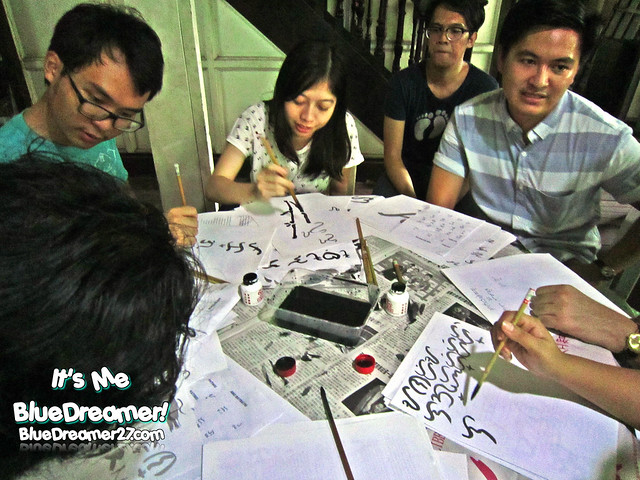
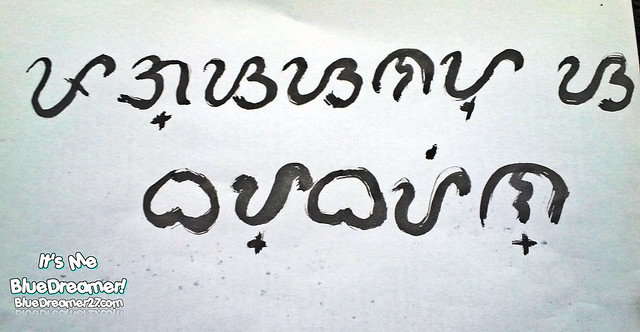 With the guide I provided above, do you think you can read this? Feel free to comment it below!
With the guide I provided above, do you think you can read this? Feel free to comment it below!
After the workshop we are lucky enough to be part of the quick tour in San Sebastian Church and I will post it my next entry.
For The mean time, you might want to check these posts as well
1. Exploring Casa Consulado
2. Sulyap Sa Quiapo Lecture Series
Oh by the way, I just made a poem written in Baybayin entitled “Puso Ko At Dalangin” 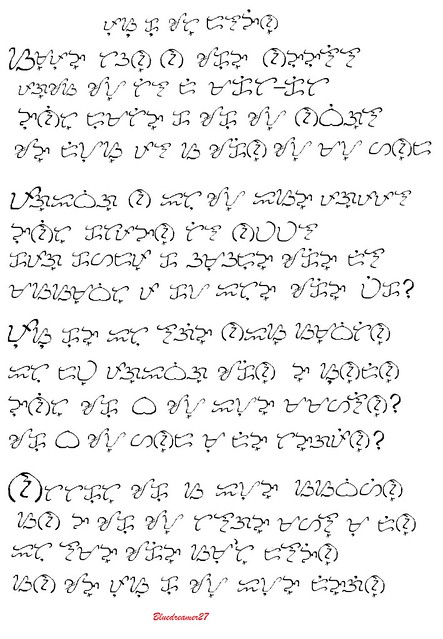
Awesome..thanks for coming to our event.. See you in the next lecture series.
So what I learned in school was wrong. It is baybayin instead of alibata. Although it has no practical use today, it is a part of the Filipino heritage. Culture is a foundation of the country and it’s national identity. Thankfully, the language has not been lost. Good post here.
This workshop looks great. I have never heard of Baybayin. But it’s great that you got an explanation and some history. And also tried it out yourself. That’s a great experience. The Baybayin looks nice. Does the text you made say something in English? I tried to find out what it was, but I didn’t get an English word haha.
I never heard about Baybayin being the correct version of Alibata. This should be corrected in schools for our students. Anyway, it is amazing that we have our own alphabet though we are not using them anymore. The best thing to do now is to help spread the word about this and let the new generations know about our colorful culture.
Baybayin! Last year, my grade 7 son studied that And I just cant understand a thing. What truly amazed me was his ability to write in that manner. He even showed me the results of his mastery exam and I was so proud of him. I like the idea that baybayin as part of Filipino culture is being taught not only in schools but in workshops or talks as well.
I have never heard of Baybayin before. I love that you are keeping your heritage alive. The script is beautiful. It must take a lot of patience!
What an amazing experience, I also look forward to learn baybayin I really do hope that we can preserve our culture like baybayin. We’re so wealthy when it comes to tradition we just have to really appreciate it.
Never heard of baybayin. Learned something new. Like how you talk about the origin. Leaning about different cultures is great.
Holy Molly! I did not understand a bit of what you wrote in Baybayin. But it looks like you really did understand the language already. You were even able to write a poem after that workshop. I don’t know too if I’d be able to memorize that language but do you think it would still be helpful for us to learn that given that we already have tagalog?
It must be pretty challenging to learn baybayin. It’s good that there are still people who know about it so a part of our cultural heritage is preserved.
Anyway, I find it interesting that calligraphy is being taught using Chinese materials such as “obak” the ink and “mopit” the brush. I did some calligraphy myself too when I was young, but it was in Chinese.
So it’s not Alibata! This should be corrected in schools. And hopefully, we could teach children this national script and continue embracing the colorful culture we have here in the Philippines. This one’s really worth sharing!
http://www.gracefulmusings.com
mommygraceblog.wordpress.com
How cool is it that our catholic prayers today is what’s written in the doctine that’s written way back 1500’s. It stood the test of time.. It just shows how religious we are us Filipinos. I love that some people still take Baybayin seriously and is still intact when it comes to history. I hope it won’t be forgotten.
Living in the Moment | http://www.maayalegaspi.com
It’s great when you can take part in a workshop like this and learn new skills, especially when they are ancient. I didn’t hear about baybayin before but it does look very interesting to practice. And the fact that you have managed to write an entire poem after just one workshop it’s very impressive.